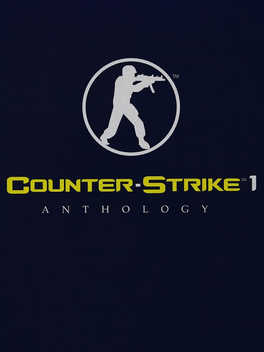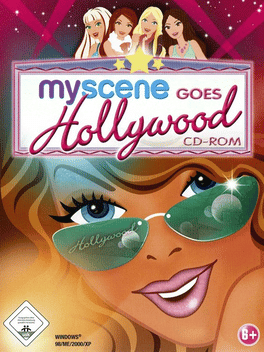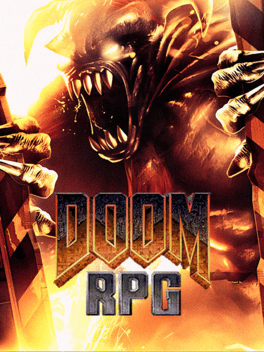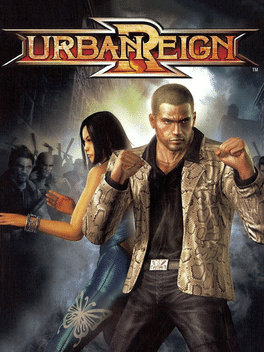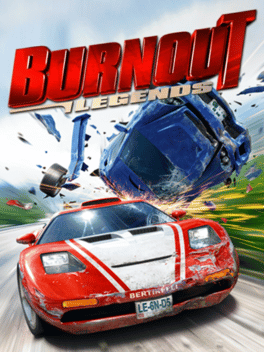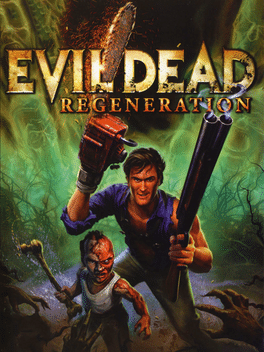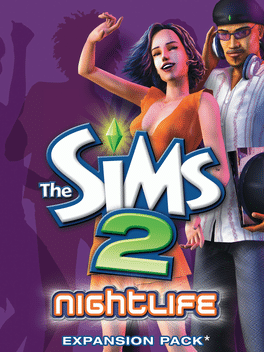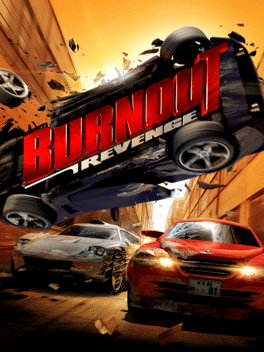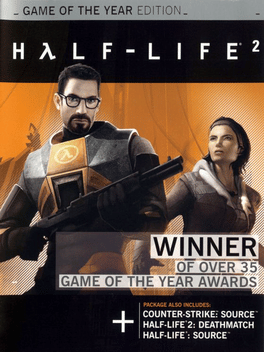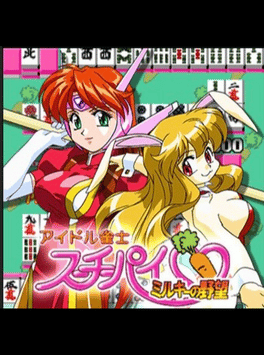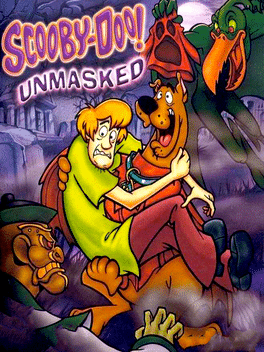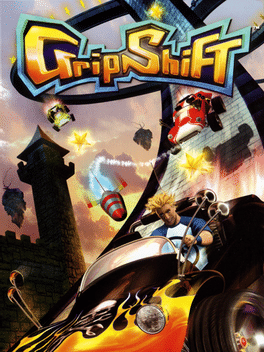New Games - Page 10366
-
Counter-Strike Anthology
2005
The original version of the #1 online action game in the world offers an action experience of incredible depth and realism. This Anthology also includes a collection of single player CS games and the official CS bot for skirmish play. Includes: Counter-Strike, Counter-Strike: Condition Zero, Day of Defeat, Deathmatch Classic, Ricochet -
My Scene Goes Hollywood
2005
Join the action with Barbie, Madison, Chelsea, Nolee, and Delancey as they work on their own movie! Play fun games as you help finish the script and design totally amazing sets. Then style the girls from head to toe for the big production! Now it's time for ultra-fabulous fun at the premiere of the movie you helped create! -
Doom RPG
2005
Doom RPG
2005
star 7.3Choose one of three different characters and get ready to battle through hordes of deadly monsters, including returning favorites such as the Pinky, Cacodemon, and Revenant, as well as new threats like the Sawcubus and Sentinel! Battle towering bosses such as the Cyberdemon, Spider Mastermind, or the Pinkinator! Interact with other survivors of the invasion to get information about your environment and solve puzzles, but beware…not all of them can be trusted! -
EverQuest: Depths of Darkhollow
2005
Depths of Darkhollow is the tenth expansion for the popular MMORPG franchise, EverQuest. -
Dr. Mario & Puzzle League
2005
star 7Dr. Mario/Puzzle League are recreations of two of Nintendo's most popular puzzle creations. Though Dr. Mario has already been released on the GBA as a Classic NES Series title, the version included in the dual-pack is enhanced specifically for the Game Boy Advance hardware instead of a straight emulation of the original NES title. Puzzle League was originally brought to life as Tetris Attack, but then rebranded on the Game Boy Color as Pokemon Puzzle Challenge a few years back. The GBA version is also enhanced for the GBA's much more capable graphics hardware and was previously an unlockable game via the GameCube - Game Boy Advance Link Cable in Nintendo Puzzle Collection for the GameCube. -
Urban Reign
2005
Urban Reign
2005
star 5.2Urban Reign is a Namco-produced 3D brawler, done in the tradition of Double Dragon and Final Fight. -
EverQuest II: Desert of Flames
2005
star 7Desert of Flames is the first expansion for EverQuest II. It features a new land mass to explore, PvP arenas, a level increase from 50 to 60, a new climb ability and the standard new items and monsters. The major quest line for the expansion is commonly known as "The Peacock Line" - This series of 17 or so quests culminates with a raid requiring the player to group up with his guildmates to slay an entity known as "The Godking". Players can choose from a selection of rewards to be used in the weapon slot depending on their class, for example a mage would receive an item named "Wand of Second life" which can also be changed at will into a two-handed weapon - "Staff of Second life". This quest takes place throughout the Desert of Ro from the sinking sands to the living tombs and eventually the Silent City. New zones include the Sinking Sands, Pillars of Flame, Clefts of Rujark and the dervish city of Maj'Dul. Also many instances such as Poets Palace and Shimmering Citadel are available with Desert of Flames. -
Burnout Legends
2005
Burnout Legends
2005
star 8.4Burnout: Legends takes the most explosive moments of the popular Burnout series of racing games, mashes them together and adds some new surprises -- giving you the best racing experience to come out for the DS. Use your car as a weapon and battle your way to the front of the pack - by taking out rivals and instigating spectacular crashes. Speed, depth and destruction are waiting for you, in the game of on-the-go automotive anarchy. -
Mario Tennis: Power Tour
2005
star 8.2Players can test their backhand in this unique role-playing tennis adventure. Train hard at the Royal Tennis Academy to be a champion. Gain experience and improve your skills through lessons and tournaments, and rise to the top of the ranks. Play as Mario, Peach, Waluigi, or Donkey Kong in a slew of wild modes. Advance through the story and unlock even more characters, all with their own power moves. Beat Mario at his own game, then link up with a friend or three for even more frantic fun. -
Evil Dead: Regeneration
2005
star 6.9Evil Dead: Regeneration takes over where the film Evil Dead 2 left off. You can play as Ash, who has been committed to an insane asylum where a mad scientist is doing experiments with the Necronomican. With the help of some firepower and your new sidekick, a 3-foot tall "deadite," you can battle the scientist's unholy creations and save civilization. -
The Sims 2: Nightlife
2005
star 7.3Your Sims are on the town hitting all the swanky hot spots in The Sims 2: Nightlife, the second expansion pack for The Sims 2. Whether they're dancing until dawn, romancing that special someone, or striking out at the bowling alley, it'll be an unforgettable night! Let your Sims loose to enjoy their favorite after-dark activities as they pursue a life of pleasure. Determine their love lives as you discover the chemistry between Sims. Will their life aspirations and personalities click or clash? It could be the beginning of a stormy affair or a dating disaster. Ready for fun and romance? Bring on the night! -
Cabela's Outdoor Adventures
2005
star 7Join Mama, Papa, Ichigo, and Ringo as they explore as a family on a tropical island. Take the Hunting & Fishing expedition of a lifetime with 22 adventures across North America and beyond. Stalk monster bucks and trophy big game or stop off and fish the local waters. Experience the sights and sounds of a true-to-life outdoor adventure where stealth, strategy and technique are of the utmost importance! -
Burnout Revenge
2005
Burnout Revenge
2005
star 8.4In Burnout Revenge, players compete in a range of racing game types with different aims. These take place within rush-hour traffic, and include circuit racing, Road Rage (where players cause as many rivals to crash as possible within a time limit, or until the player's car is wrecked), Burning Lap (a single-lap, single-racer time attack mode), Eliminator (a circuit race where every thirty seconds, the last-placed racer's car is detonated; the race continues until only one racer is left), and Crash (where the player is placed at a junction with the aim of accumulating as many "Crash Dollars" as possible). A new gameplay feature in Burnout Revenge is the ability to ram same-way small to medium traffic, known as "traffic checking", propelling the rammed car forward; the event in which a "checked" car hits a rival is considered as a Traffic Takedown. Traffic checking is the focus of a new race type, Traffic Attack (whereby a player must earn a set amount of Crash Dollars through checking traffic), which can be used lat -
Half-Life 2: Game of the Year Edition
2005
The critics agree, Half-Life 2 has been named PC GAME OF THE YEAR by over 35 organizations worldwide. Play the game that set a new benchmark in gaming with its startling realism, digital actors, advanced AI, and physical gameplay. + Also Includes: Counter-Strike: Source Half-Life 2: Deathmatch Half-Life: Source -
Idol Janshi Suchie-Pai: Milky no Yabou
2005
A "beautiful girl mahjong" game from the Suchie-Pai series. -
Scooby-Doo! Unmasked
2005
-
Conspiracy: Weapons of Mass Destruction
2005
star 1Conspiracy: Weapons of Mass Destruction is propelled by the powerful FireWarrior engine as, in first-person shooter action across five sprawling levels, gameplay spans from secret bases in Aztec ruins to military training camps in the Arctic Circle. Players assume the square-jawed role of Cole Justice, an ex government secret service agent, trained mercenary and all-round tough guy, recruited by 'the agency' for one final assignment. According to intelligence reports, a rogue government agency known as 'Hydra' has been developing weapons of mass destruction to sell to worldwide terrorist organisations. The government no longer has control over this rogue agency and it has quickly become an embarrassment in need of urgent elimination -
GripShift
2005
GripShift
2005
star 7.3Speed your way through insane levels in this nitrous fueled, star collecting, driving action game! -
Scooby-Doo! Unmasked
2005
Scooby-Doo! Unmasked
2005
star 5.3The player uses Scooby-Doo to take down enemies and collect clues for Velma. Scooby-Doo can change costumes which can give him different moves such as kung-fu and fly like a bat. Without using these costumes some levels may not be possible to finish. This is the third Scooby-Doo game to feature a laugh track. In the Nintendo DS game, there are a few minigames included to make use of its touchscreen. -
Arcade Legends Sensible Soccer Plus
2005
The Arcade Legends Sensible Soccer Plus is a Sega Mega Drive "console on a chip" designed and manufactured by Radica under license from Sega Toys and Codemasters. It contains the Mega Drive versions of Sensible Soccer, Cannon Fodder and Mega Lo Mania.

